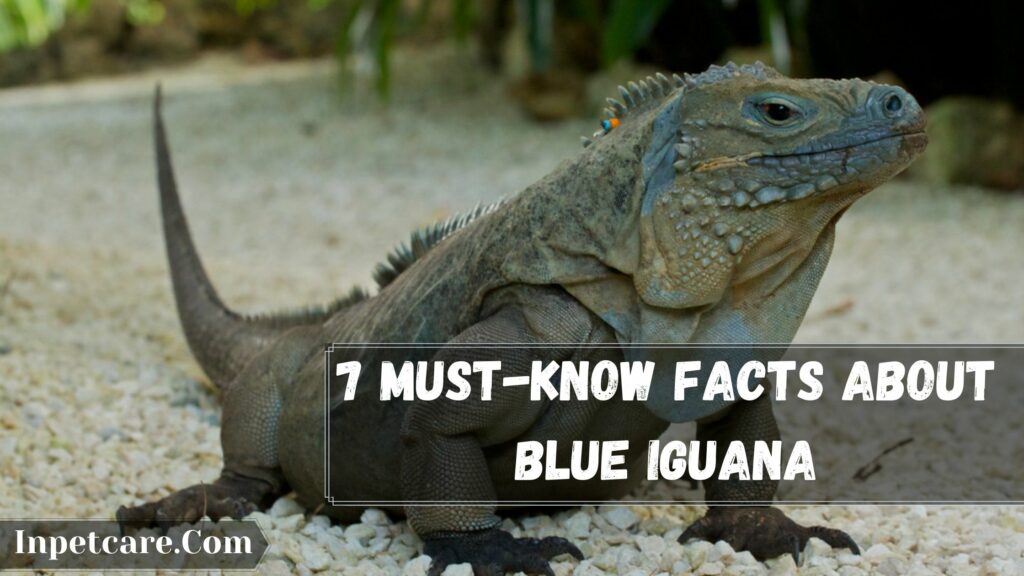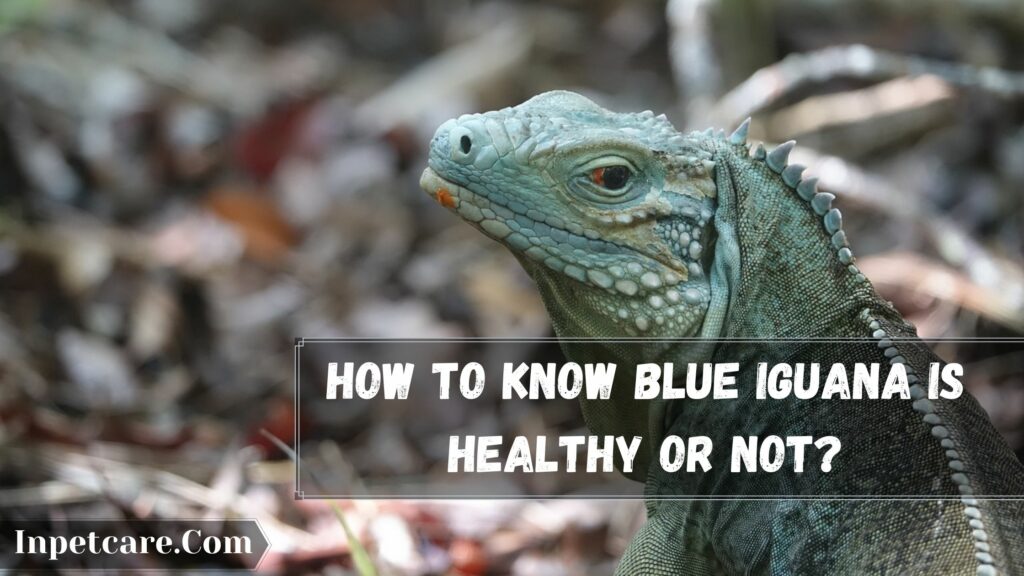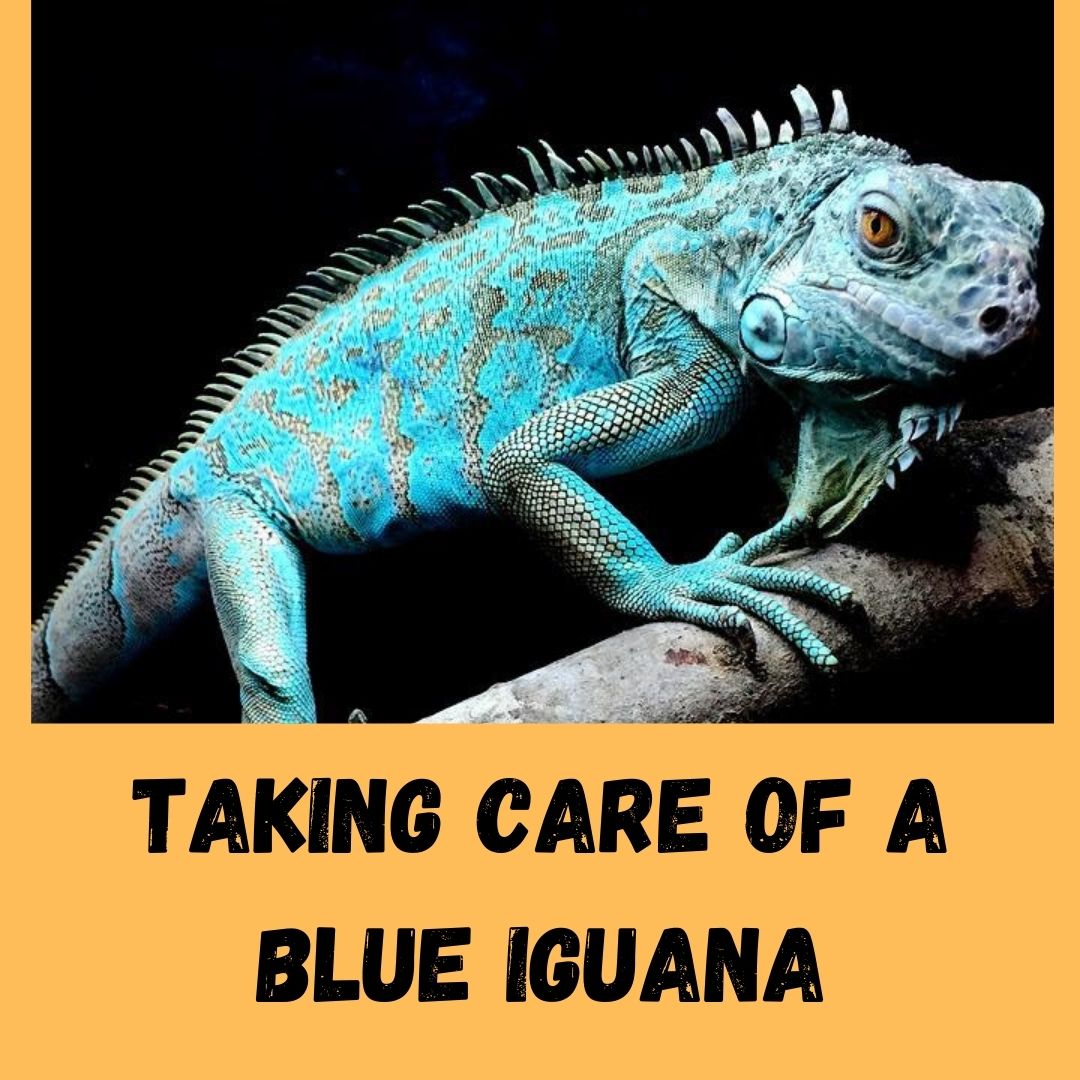Iguanas are Popularly known for their calm disposition and bright colour. Once, they were one of the most popular exotic pets in the United States. But today, they are considered a pest in Florida due to their increasing population, which is becoming a threat to the natural ecosystem.
But on the other hand, some of its subspecies are on the endangered list. In this article, we will discuss how to care for blue Iguana. Whether you are a lizard hobbyist or a fellow who wants to keep a pet for companionship, iguanas can be perfect. However, Iguanas are demanding to care appropriately and challenging as it’s a long term commitment. Therefore, How To Take Care Of A Blue Iguana?
Post Contents
7 Must-Know Facts About Blue Iguana

- Blue iguanas, with excellent vision, enable them to detect motions at long distances.
- Despite their names, iguanas are found in different types and colours. In the region of Peru, they appear bluish with bold blue markings.
- Blue Iguana is widely distributed from southern Mexico to Central Brazil, Bolivia, Paraguay, and the Caribbean.
- They have a row of spines on their back and tail to protect them from predators.
- Blue Iguana also has very sharp teeth, capable of getting through human skin.
- Blue Iguana cannot produce vitamin d that promotes calcium absorption in the absence of appropriate sources of UVB and UVA lighting.
- When Blue Iguana often attempts to flee. If they’re near a water body, you will notice them diving into it and swimming away from the predators.
What Supplies To Have For Blue Iguanas
- 55-75 Gallon Sized Enclosure
- Some Commercial Foods
- Moss
- UVB & UVA Lamps
- Basking Lamp
- Hidings
- Substrates
- Food Dish
- Water Bowl
- Climbing Obstacles
- Under Tank Heater
- Bedding
- Heat Fixture
- 2 Thermometer
- Vitamin D & Calcium Supplement
4 Must-Have Settings For Blue Iguanas Enclosure
Humidity: Maintaining humidity between 72-90% is essential for your Iguana wellbeing. Appropriate moisture is a key to your Iguana’s good health. You can increase the humidity level by misting or soaking in a shallow pan of warm water every day.
Decorating: It is essential to provide hiding branches and areas for iguanas to stay active. Therefore substance and plants are more important. Climbing substrates should also be included in their enclosure. Do use paper-based or Alpha-based bedding as these are digestible if ingested.
Bedding like sand, mulch, and wood chips should always be avoided as it is indigestible to Iguana. It can also cause light gastrointestinal tract obstruction if ingested. You can also use commercially available reptile carpet in the enclosure as it can be cleaned and replaced regularly.
Temperature. It is essential to provide a temperature gradient of 100-120 Fahrenheit in the warm end and 80 Fahrenheit in the more fantastic end of the Iguana enclosure. Without proper temperature gradients in the section, they won’t be able to regulate the body temperature accordingly.
Choosing a ceramic heat bulb or incandescent light is vital as a primary heat source. It is essential to install two thermometers. Place one thermometer in the basking area while the other one in the more excellent end. You can also take a help of a point and shoot temperature gun to monitor your Iguana’s enclosure temperature. Always avoid hot rocks it can cause your iguanas to burn.
Lighting: Do you know that Iguana needs UVB and UVA rays to maintain their health, perform bodily functions, stay active, and digest food properly. It is essential to provide them with the full spectrum of glowing for at least 10 to 12 hours a day to enable your Iguana to make vitamin d in their skin.
Vitamin d helps them absorb calcium properly from the diet. A ceramic heater or incandescent bulb can also provide heat at all hours or just at night. If you have kept lights on during the daytime, consider switching them off at night.
You don’t need to keep it on for 24 hours as it can hurt their health. If you are thinking of keeping your Iguana outdoors, consider supporting them in direct sunlight, which is unfiltered by a window for UV exposure. Let’s talk about how you can clean a clean Iguana enclosure.
How To Know Blue Iguana Is Healthy Or Not?

13 Signs Of A Sick Blue Iguana
- Unexpected Weight Loss
- Lethargy
- Swelling
- Improper Shedding
- Discoloration
- Discharge From Nose
- Runny Or Bloody Stool
- Discharge From Eyes
- Not Eating
- Lack Of Stool
- Runny Nose
- Paralysis Of Limbs
- Difficulty In Breathing
9 Signs Of A Healthy Blue Iguana
- Active
- Full Grown Muscular Tail
- Clear Nose
- Close Vent
- Normal Droppings
- Proper Coloration
- No Swelling Or Soreness
- Eats & Poops Regularly
- Clear & Bright Eyes
How To Take Care Of A Blue Iguana?
What To Feed Blue Iguanas?
In their juvenility, iguanas tend to be insectivorous, whereas adults are entirely herbivorous. When feeding adults, include 70% of their diet with dark greens and 20% with vegetables. The remaining 10% could consist of fruits and other treats.
It is essential to provide vitamin and Calcium supplements as well. Without calcium, they won’t be able to stay active, Healthy and digest food properly. Calcium deficiency can lead an Iguana to metabolic bone disease as well.
Foods like turnips, greens, cabbage, carrots, green beans, broccoli, strawberries, Bananas, collard greens, and dandelion greens are edible for Iguana. Do keep fresh and clean water readily available. If the water is contaminated, do change it.
Water needs to be replaced 2-3 times a day. Also, it’s essential always to include a commercial pellet diet specially designed for iguanas as it can provide those minerals that your pet is not getting from eating greens directly.
May is sure to feed your adult iguanas only once a day. Whereas feed the baby & Juvenile iguanas 2-3 times a day. Their food should always be served in a food dish rather than leaving it on the enclosure floor. When talking about Substrates, always avoid getting the one made from loose particles.
Iguanas are known to eat plant matter and the substrate of their enclosure. Feeding a high protein diet to your Iguana can result in kidney failures and gastrointestinal tracts. Do your baby fruits favoured food to encourage consumption. Make sure to sprinkle their food with vitamin D and calcium supplements and multivitamins once a day.
What Size Cage For Blue Iguanas?
Always have a spacious environment which means that you will need to invest in an enclosure as big as possible. For keeping an adult size Iguana, 55 gallons is more suitable. However, I would recommend you to have at least a 75 to 100-gallon size tank.
Some also prefer keeping their tank in a 120-gallon tank. You should also look at the material used to build the cage. The cage of your blue Iguana should always prevent escape. When choosing a pen for an Iguana, make sure to select the one that has a good height.
Iguanas tend to be arboreal reptiles, so they need climbing obstacles in their enclosure. It is best to always use the one with at least 6 feet in height as it is critical.
How To Clean A Blue Iguana’s Enclosure?
It is essential to spot clean your Iguana bedding and discard any uneaten food. Thorough cleaning and disinfectant are necessary to be done once a week. Below are the steps to follow in cleaning and iguanas inclusion early.
- Get your Iguana in a separate enclosure, but ensure it is secure to prevent further escape.
- Take disinfectant and scrubber.
- Scrub the tank thoroughly, including the furnishings of your reptiles Habitat. You can take the help of a cleaner or 3% bleach solution to clean.
- Rinse the cage with water removing all traces of enclosure bleach smell or cleaner once you have rinsed off the tank to the second next step.
- Let the enclosure dirt before getting your iguanas back into their cage. It is essential to dry the tank and its furnishing properly before reshifting your pet.
- Now, clean the substrate and then let it dry.
- Put your clean substrate in that enclosure; if it’s dry, return your Iguana to its primary section.
Interesting Further Reading
- Iguana Vs Monitor Lizard: 7 Key Differences
- 7 Safe Plants For Iguana Enclosure
- 9 Best Type Of Iguana For A Pet
FAQ
Conclusion
In The Wild, blue iguanas eat anything they find, including plant matter, seeds, berries, Green leaves and veggies. In addition, iguanas are thought to be a pest in Florida as they damage crops and vegetation fastly.
Do you know that hunting iguana in Florida is also legal? But, as blue Iguana is Endangered, it is prohibited to capture them. However, back to the point, iguanas are a trendy pet for their calm disposition and excellent vision. Make sure always to get a baby Iguana first because that is easy to Bond with.
I have tried my best to give you all the information about how to care for blue Iguana. If you find this post helpful, consider sharing this one with others, as your one share can help one or more people set up proper conditions and Habitat for their Iguana livelihood and health.

94% of pet owners say their animal pal makes them smile more than once a day. In 2007, I realized that I was made for saving Animals. My father is a Vet, and I think every pet deserves one. I started this blog, “InPetCare”, in 2019 with my father to enlighten a wider audience.
